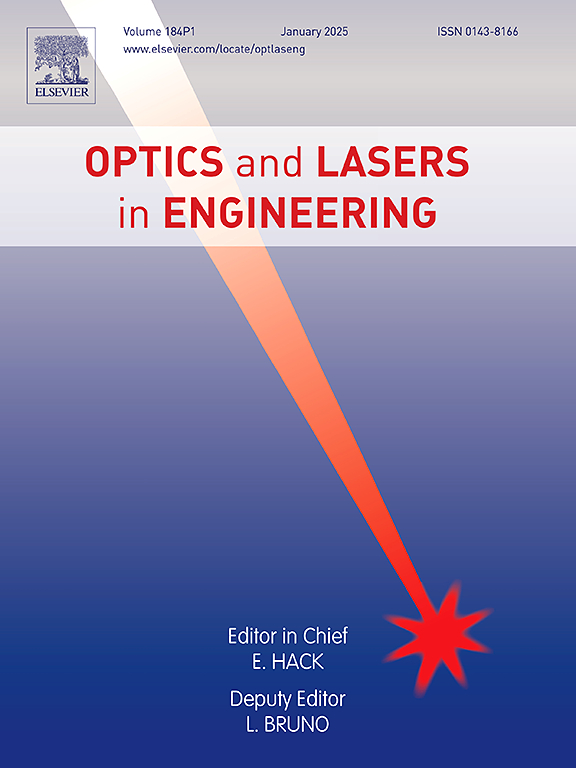PLAM系统介导的808 nm低功率激光密度对人脐带间充质干细胞生物活性增强的优化
IF 3.5
2区 工程技术
Q2 OPTICS
引用次数: 0
摘要
低水平激光治疗(LLLT)在增强间充质干细胞(MSCs)功能方面具有重要的再生医学潜力。然而,最佳辐照参数,特别是功率密度,仍不清楚。在这项研究中,我们开发了一个自动精密激光调节和运动(PLAM)系统来研究808 nm功率可调激光对人脐带间充质干细胞(HUMSCs)的影响。激光的功率密度从10到500 mW/cm²不等,恒定能量密度为4 J/cm²。在这些辐照条件下,生物响应表现出明显的功率依赖性,在100和250 mW/cm²时观察到最佳效果,符合Arndt-Schulz定律。具体来说,250 mW/cm²的辐照在24小时显著加速了细胞迁移,并在48小时达到了最高的细胞活力(P <;0.01)。值得注意的是,100 mW/cm²方案显示出优越的生物安全性,保持持续的ATP生产(p <;24小时0.001;p & lt;0.01 (48 h)和中等活性氧(ROS)水平(p <;0.0001),使其成为长期干细胞扩增的可靠方法。实时温度监测显示ΔT≤1℃,排除热损伤。结果强调了在LLLT中优化功率密度的重要性,并确定了100 mW/cm²是治疗效果和安全性之间的最佳平衡。此外,PLAM系统简化了辐照过程,减少了操作误差,提高了实验的可重复性。这些发现为再生医学中LLLT参数的标准化提供了科学依据,并为未来光生物调节研究提供了PLAM自动化实验平台。本文章由计算机程序翻译,如有差异,请以英文原文为准。
PLAM system-mediated optimization of 808 nm low-level laser power density for enhanced bioactivity in human umbilical cord mesenchymal stem cells
Low-level laser therapy (LLLT) has significant potential in regenerative medicine for enhancing mesenchymal stem cells (MSCs) function. However, the optimal irradiation parameters, particularly power density, remain unclear. In this study, we developed an automated Precision Laser Adjustment and Motion (PLAM) system to investigate the effects of an 808 nm power-adjustable laser on human umbilical cord mesenchymal stem cells (HUMSCs). The laser was applied at power densities ranging from 10 to 500 mW/cm², with a constant energy density of 4 J/cm². Under these irradiation conditions, the biological responses showed clear power-dependence, with optimal effects observed at 100 and 250 mW/cm², consistent with the Arndt-Schulz law. Specifically, the 250 mW/cm² irradiation significantly accelerated cell migration at 24 hours and achieved the highest cell viability at 48 hours (P < 0.01). Notably, the 100 mW/cm² protocol demonstrated superior biosafety, maintaining sustained ATP production (p < 0.001 at 24 hours; p < 0.01 at 48 hours) and moderate reactive oxygen species (ROS) levels (p < 0.0001), making it reliable for long-term stem cells expansion. Real-time temperature monitoring showed ΔT ≤1 °C, ruling out thermal damage. The results emphasize the importance of optimizing power density in LLLT and identify 100 mW/cm² as the optimal balance between therapeutic efficacy and safety. Furthermore, the PLAM system simplifies the irradiation procedure, reduces operational errors, and enhances experimental repeatability. These findings provide a scientific basis for standardizing LLLT parameters in regenerative medicine and introduce the PLAM automated experimental platform for future photobiomodulation research.
求助全文
通过发布文献求助,成功后即可免费获取论文全文。
去求助
来源期刊

Optics and Lasers in Engineering
工程技术-光学
CiteScore
8.90
自引率
8.70%
发文量
384
审稿时长
42 days
期刊介绍:
Optics and Lasers in Engineering aims at providing an international forum for the interchange of information on the development of optical techniques and laser technology in engineering. Emphasis is placed on contributions targeted at the practical use of methods and devices, the development and enhancement of solutions and new theoretical concepts for experimental methods.
Optics and Lasers in Engineering reflects the main areas in which optical methods are being used and developed for an engineering environment. Manuscripts should offer clear evidence of novelty and significance. Papers focusing on parameter optimization or computational issues are not suitable. Similarly, papers focussed on an application rather than the optical method fall outside the journal''s scope. The scope of the journal is defined to include the following:
-Optical Metrology-
Optical Methods for 3D visualization and virtual engineering-
Optical Techniques for Microsystems-
Imaging, Microscopy and Adaptive Optics-
Computational Imaging-
Laser methods in manufacturing-
Integrated optical and photonic sensors-
Optics and Photonics in Life Science-
Hyperspectral and spectroscopic methods-
Infrared and Terahertz techniques
 求助内容:
求助内容: 应助结果提醒方式:
应助结果提醒方式:


